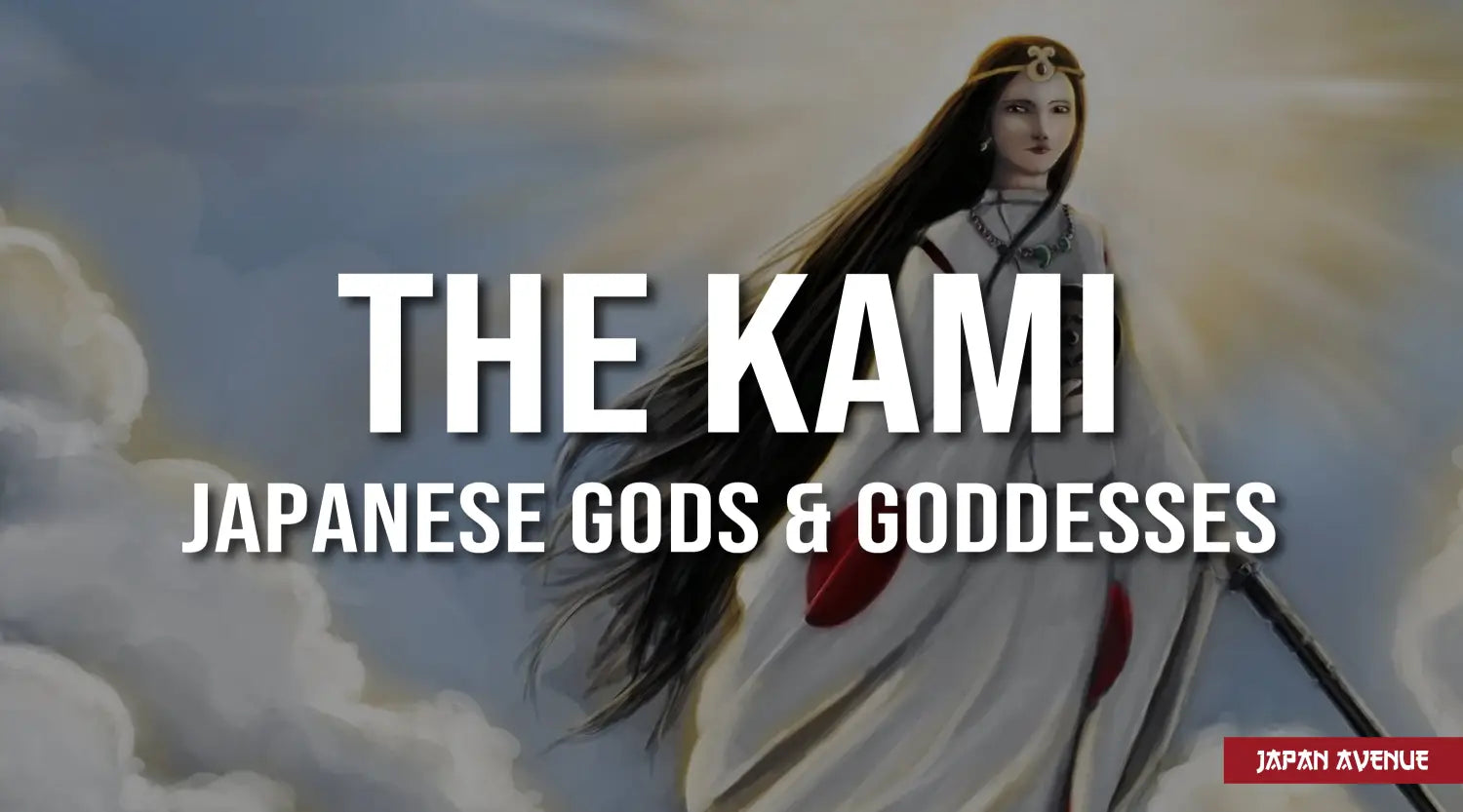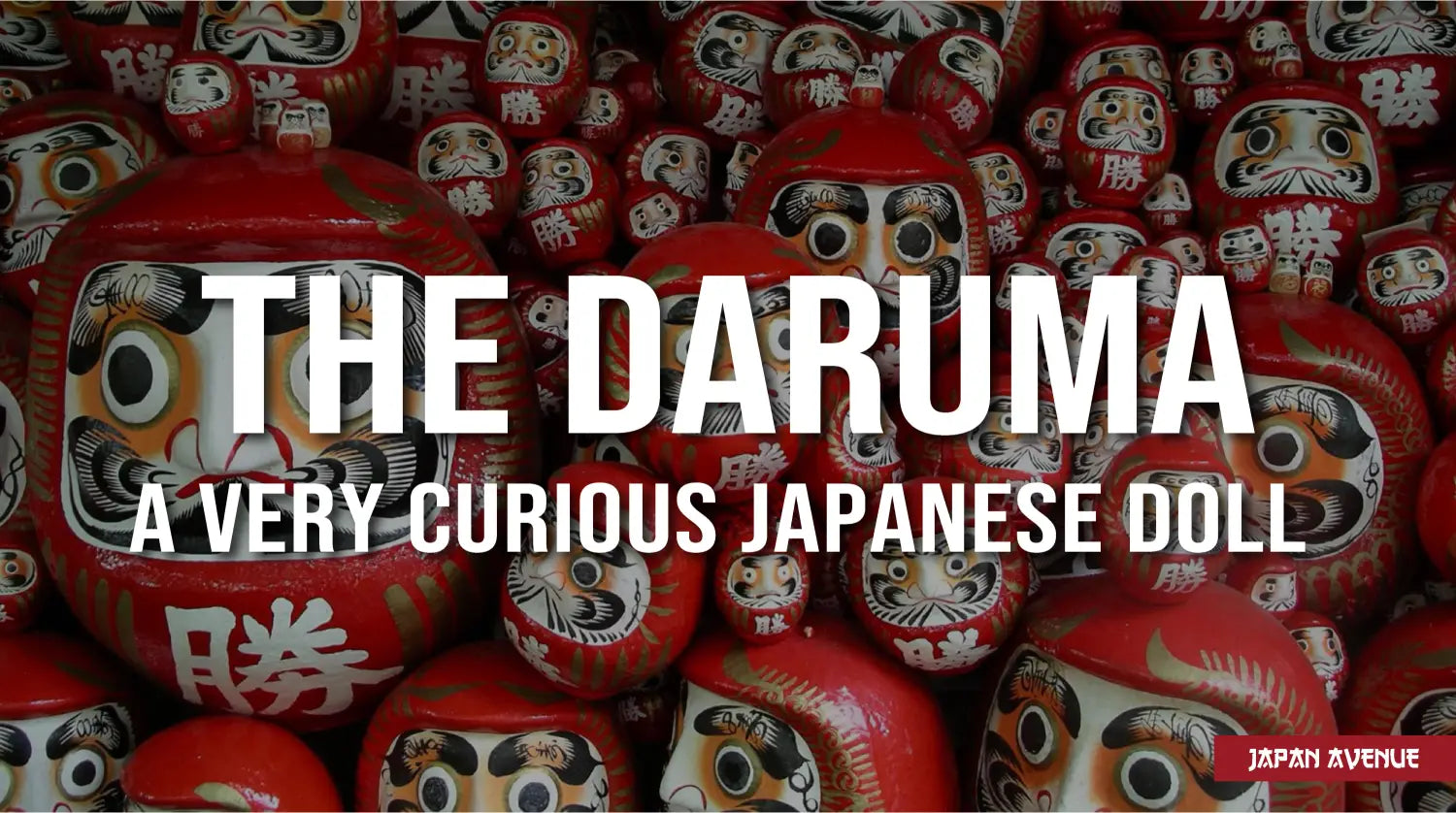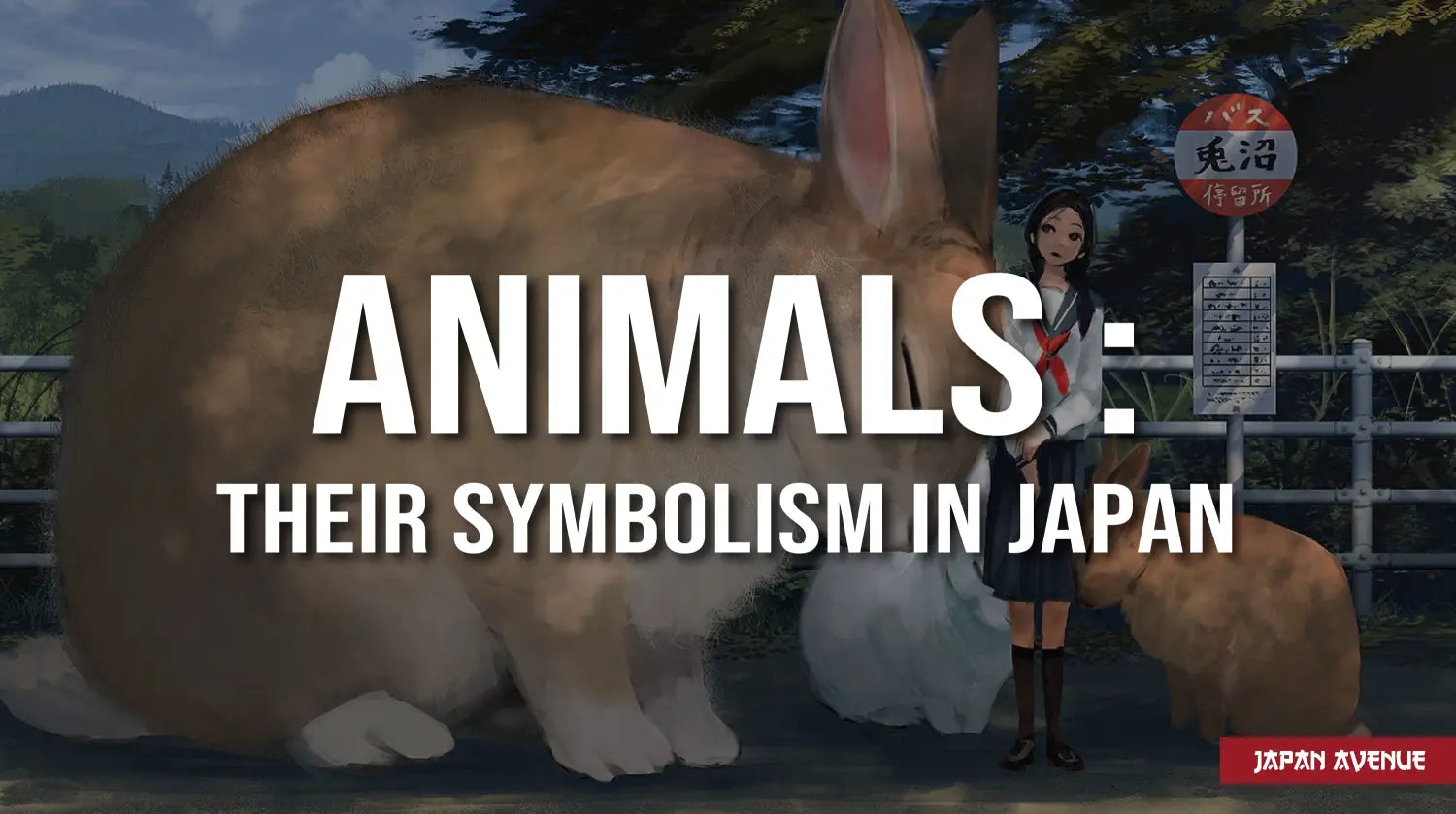Japanese mythology is a source of fascinating stories and legends full of twists and turns. In the founding myths of Japan, we can find the kami, famous gods and goddesses originating from the oldest beliefs of the Land of the Rising Sun.
Kamis are deities or spirits of the Shinto religion that are found in nature. They are related to cosmic forces and can even embody the souls of deceased people. They are the spirits of ancestors, places, natural elements, or deceased emperors, that rule over Japan.
Discover the meaning of the word kami, the different types of spirits, gods and deities, their history in the Shinto religion and the most famous Japanese ones!
Kami: definition and etymology

Representation of the goddess Amaterasu leaving the cave, by Shunsai Toshimasa.
"Kami" means "spirit" or "superior" in Japanese and refers to all spiritual entities worshipped in the Shinto religion. It can be either a god or a spirit.
Kamis can be personified deities similar to ancient Greek or Roman mythology. The term also refers to the spirits of nature.
In addition, certain high ranking people such as emperors and clan leaders might be part of them after their death. In case one wishes to refer to more than one god, the word Kamigami is used.
Shinto deities are distinguished by their qualities and defects. Thus, in Japanese mythology, gods are not necessarily perfect beings, assuming that there is both positive and negative in each and every thing. Invisible, they manifest themselves through the divine forces that animate the elements and are likely to cause natural disasters.
When respected and honored, kami are benevolent, but be careful not to attract their lightning. For centuries, the Japanese have paid homage to the Kamis and thus gained their favor.
The different types of Japanese gods

Shinto shrine with Torii gate at its entrance.
Shintoism is an animist and polytheistic religion based on the belief that every living being or object is driven by a spirit. Likewise, it supports the existence of several gods contrary to monotheistic religions.
The Kojiki and the Nihon Shoki are the first reference books of the founding myths of Japan on which Shintoism is based. Moreover, the Shinto religion counts a myriad of kami that can be classified in 3 categories.
- The creation kami
They are the first kami having a role in the creation of the world. Known as Kotoamatsukami, these deities appeared by themselves, without any progenitor.
- The celestial kami
The celestial kami or Amatsukanami lives in the High Plain of Paradise. They are immortal.
- The earthly kami
Just like humans, Kunitsukami are mortal. Some are said to be descendants of Ninigi, the first Kami that arrived on Earth.
| ❓ Did you know? Torii are sometimes found on the paths leading to Shinto shrines. These gates mark the entrance to a sacred space. To pass through them, you have to make a slight bow and apologize for disturbing the kami who lives in the place. However, be careful not to walk in the center of the torii, as this passage is reserved for the deities. |
The role of Japanese deities

Engraving by Toyohara Chikanobu made in 1878 showing Emperor Meiji and his wife, surrounded by kamis and ancient emperors.
In animist beliefs, natural elements were respected simply for their splendor. The mountains, the wind, the sea and the divine nature of the world were revered. However, the perception of the kami evolved along with the history of Japan.
In the past, the kami had a protective role in hunting, fishing, gathering and rice cultivation. Thus people prayed to the kami to bless the land and to obtain fruitful harvests.
Japanese deities are also directly related to the imperial family. One of the best known myths of the Kojiki tells the story of Ninigi-no Mikoto, grandson of the sun goddess and the first kami to descend to earth to rule. It is also believed that the legendary emperor Jinmu is a descendant of Prince Ninigi. This divine link explains why emperors are considered as demi-gods in Japan.
Lastly, the kami had a role of protection against disease, such as Hogami, deity of smallpox. Later on, the gods evolved as modern diseases appeared. Moreover, Japanese people visit temples to receive healing powers.
Izanagi and Izanami: The origins of the universe

The couple Izanami and Izanagi on the heavenly bridge. Print of the Japanese artist Utagawa Hiroshige dating from 1849-50. (Source : Ukiyo-e.org)
Formerly, the Earth and the sky were only one element and the universe did not exist yet, leaving room for chaos. Gradually, as a form of existence was germinating, the sky and the Earth broke apart and the first kami appeared. Ame-no-Minaka-Nushi had several descendants, including Izanagi, god of creation and Izanami, goddess of death and creator of the universe.
The couple Izanagi and Izanami were at the origin of the first islands of Japan. From their union were born many kamis, gods of the natural elements. Unfortunately, when the fire kami was born, Izanami died. Izanagi, hurt by the loss of his companion, killed the child in anger. As a result of this fatal act, 8 volcanoes appeared.
To try to get back his beloved, the god of creation joined the kingdom of the dead, but without success. Returning home in fear, the god decided to purify himself by taking a bath. By washing his left eye, he created the sun goddess Amaterasu, then by cleaning his right eye, he gave birth to the moon god Tsukuyomi. Finally, by washing his nose Izanagi gave birth to Susanoo, the god of wind and storms. Note that this purification rite is still practiced today in the Shinto religion.
The main Japanese kami

Illustration by Mario Gully (source: marvel.fandom.com)
Among the 300 kami mentioned in the Kojiki, some are particularly venerated in Japan, as can be testified by the shrines and cults built in their honor. Here are some of the most famous ones.
🌞 Amaterasu: goddess of the sun
Amaterasu is probably the most worshipped deity in the Shinto religion. Born from the left eye of Izanagi, Amaterasu was sent to the high celestial plains by Izanagi in order to reign there. The queen of Takama-no-hara is often represented by a mirror and sometimes in human form. Her importance in Japanese culture is such that she is symbolized on the Japanese flag by a red disc.
🌜 Tsukuyomi: god of the moon
Brother of Amaterasu, Tsukuyomi was born from the right eye of Izanagi. There is a legend that says the two kami quarreled with each other, causing the moon and the sun to be separated forever.
🌪 Susanoo: god of the storms and the sea
Brother of the sun goddess and the moon god, Susanoo appeared from the nasal appendage of Izanagi. Driven away by his father, the sea kami went to the celestial kingdom of his sister and provoked her. Susanoo is then exiled to the province of Izumo and, according to the legend of Yamata no Orochi, he became famous over here for having fought a dangerous dragon.

Left: triptych representing the siblings Tsukuyomi, Susanoo and Amaterasu / Left: Representation of the goddess Amaterasu
⚔ Hachiman: god of war
Represented by a pigeon, Hachiman is the protector of Japan. Formerly prayed for agriculture and fishing as well, this deity is now associated with war.
🤔 Omoikane: god of wisdom and intelligence
Related to wisdom and reflection, Omoikane is the master of wise counsel. He is frequently summoned by other kami to help them find solutions.
🥋 Saruta hiko: leader of the earthly kami
This powerful long-nosed god governs the earthly kami and protects the bridge that connects Earth to Heaven. He is very present in the Kojiki, especially to welcome the grandson of the Sun Goddess on Earth. Revered for his strength, Saruta hiko is the god of martial arts in Japan.
🍚 Inari: kami of rice and general prosperity
Inari, the deity associated with the cultivation of rice fields, is highly popular in Japanese culture. As a symbol of prosperity, farmers worship her for the harvest and fertility of the land. Inari is also a protective entity for women. She is often represented by her messenger Kitsune, a fox with many tails.
⚡ Raiden: god of thunder
With his drums, Raiden, also called Raijin, is responsible for creating lightning and thunder. This demonic-looking storm master caused the Typhoon that prevented the Mongol invasion.
💨 Fujin: god of the wind
Half human/half demon, Fujin is the brother of Raiden. He is equipped with a bag, which he opens to blow wind.

Left: apparition of the goddess Inari with her messenger, kitsune / Right: Raijin, god of lightning and Fujin, god of wind (painting by Ogata Korin)
🖊 Tenjin: god of scholarship
Represented by an ox, this deity occupies an important place in the student life, especially during the exams. He embodies a scholar of the Heian period.
😄 Uzume: kami of joy
This deity is known to have helped the gods to restore the light while dancing. His smiling face appears on Japanese masks, in particular at the theater or during folk dances.
🐲 Ryujin: god of the sea
In Japan, this dragon reigns over the sea and the oceans. His servants include various sea creatures: fish, turtles, jellyfish... Ryujin is an ancestor of Jinmu, the first emperor of Japan in Japanese mythology.
💧 Suijin: kami of water
This deity is associated with the water environment and legendary as well as real creatures such as dragons, snakes and Kappa.
Japanese deities will never stop surprising you through their legends. They are at the origin of the Shinto beliefs and the culture of the Land of the Rising Sun. Plus, you will have the opportunity to honor them during the Matsuri festivals.
Cover image: Joycee-Joe on DeviantArt
Other topics that may interest you
The Yurei, terrifying Japanese ghosts
Kitsune, the Japanese Fox with Multiple Powers
Tengu, the well-respected Japanese demon



